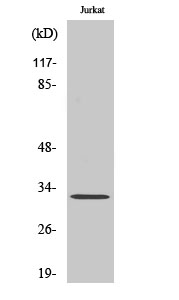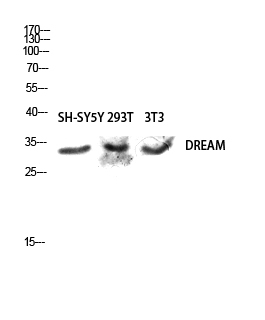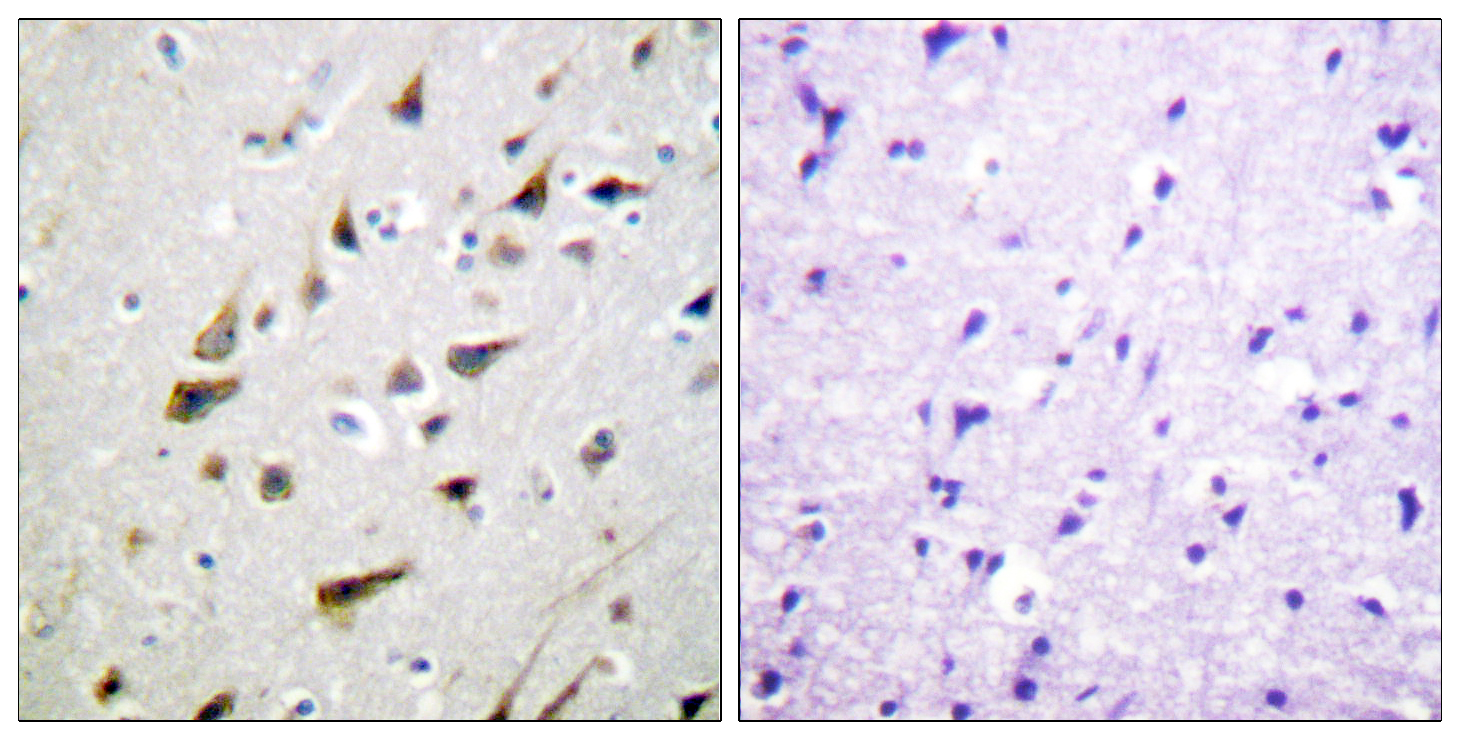DREAM Polyclonal Antibody
- Catalog No.:YT1412
- Applications:WB;IHC;IF;ELISA
- Reactivity:Human;Mouse
- Target:
- KChIP3
- Gene Name:
- KCNIP3
- Protein Name:
- Calsenilin
- Human Gene Id:
- 30818
- Human Swiss Prot No:
- Q9Y2W7
- Mouse Gene Id:
- 56461
- Mouse Swiss Prot No:
- Q9QXT8
- Immunogen:
- The antiserum was produced against synthesized peptide derived from human Calsenilin/KCNIP3. AA range:29-78
- Specificity:
- DREAM Polyclonal Antibody detects endogenous levels of DREAM protein.
- Formulation:
- Liquid in PBS containing 50% glycerol, 0.5% BSA and 0.02% sodium azide.
- Source:
- Polyclonal, Rabbit,IgG
- Dilution:
- WB 1:500 - 1:2000. IHC 1:100 - 1:300. IF 1:200 - 1:1000. ELISA: 1:20000. Not yet tested in other applications.
- Purification:
- The antibody was affinity-purified from rabbit antiserum by affinity-chromatography using epitope-specific immunogen.
- Concentration:
- 1 mg/ml
- Storage Stability:
- -15°C to -25°C/1 year(Do not lower than -25°C)
- Other Name:
- KCNIP3;CSEN;DREAM;KCHIP3;Calsenilin;A-type potassium channel modulatory protein 3;DRE-antagonist modulator;DREAM;Kv channel-interacting protein 3;KChIP3
- Observed Band(KD):
- 29kD
- Background:
- This gene encodes a member of the family of voltage-gated potassium (Kv) channel-interacting proteins, which belong to the recoverin branch of the EF-hand superfamily. Members of this family are small calcium binding proteins containing EF-hand-like domains. They are integral subunit components of native Kv4 channel complexes that may regulate A-type currents, and hence neuronal excitability, in response to changes in intracellular calcium. The encoded protein also functions as a calcium-regulated transcriptional repressor, and interacts with presenilins. Alternatively spliced transcript variants encoding different isoforms have been described. [provided by RefSeq, Jul 2008],
- Function:
- function:Calcium-dependent transcriptional repressor that binds to the DRE element of genes including PDYN and FOS. Affinity for DNA is reduced upon binding to calcium and enhanced by binding to magnesium. Seems to be involved in nociception.,function:May play a role in the regulation of PSEN2 proteolytic processing and apoptosis. Together with PSEN2 involved in modulation of beta-amyloid formation.,function:Regulatory subunit of Kv4/D (Shal)-type voltage-gated rapidly inactivating A-type potassium channels. Probably modulates channels density, inactivation kinetics and rate of recovery from inactivation in a calcium-dependent and isoform-specific manner. In vitro, modulates KCND2/Kv4.2 and KCND3/Kv4.3 currents. Involved in KCND2 and probably KCND3 trafficking to the cell surface.,PTM:Palmitoylated. Palmitoylation enhances association with the plasma membrane.,PTM:Phosphorylation at Ser-
- Subcellular Location:
- Cytoplasm . Cell membrane ; Lipid-anchor . Endoplasmic reticulum . Golgi apparatus . Nucleus . Also membrane-bound, associated with the plasma membrane (PubMed:15485870). In the presence of PSEN2 associated with the endoplasmic reticulum and Golgi. The sumoylated form is present only in the nucleus. .
- Expression:
- Highly expressed in brain. Widely expressed at lower levels. Expression levels are elevated in brain cortex regions affected by Alzheimer disease.
- June 19-2018
- WESTERN IMMUNOBLOTTING PROTOCOL
- June 19-2018
- IMMUNOHISTOCHEMISTRY-PARAFFIN PROTOCOL
- June 19-2018
- IMMUNOFLUORESCENCE PROTOCOL
- September 08-2020
- FLOW-CYTOMEYRT-PROTOCOL
- May 20-2022
- Cell-Based ELISA│解您多样本WB检测之困扰
- July 13-2018
- CELL-BASED-ELISA-PROTOCOL-FOR-ACETYL-PROTEIN
- July 13-2018
- CELL-BASED-ELISA-PROTOCOL-FOR-PHOSPHO-PROTEIN
- July 13-2018
- Antibody-FAQs
- Products Images

- Western Blot analysis of various cells using DREAM Polyclonal Antibody diluted at 1:500

- Western blot analysis of SH-SY5Y 293T 3T3 lysis using DREAM antibody. Antibody was diluted at 1:500

- Immunofluorescence analysis of HeLa cells, using Calsenilin/KCNIP3 Antibody. The picture on the right is blocked with the synthesized peptide.

- Immunohistochemistry analysis of paraffin-embedded human brain tissue, using Calsenilin/KCNIP3 Antibody. The picture on the right is blocked with the synthesized peptide.

- Western blot analysis of lysates from MCF-7, Jurkat, and A549 cells, using Calsenilin/KCNIP3 Antibody. The lane on the right is blocked with the synthesized peptide.



